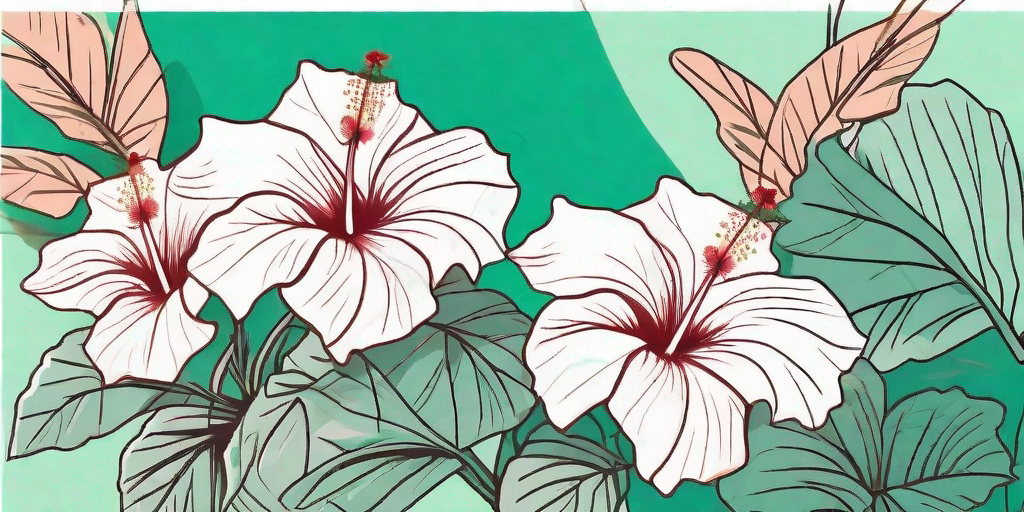
Ah, the hibiscus. The belle of the botanical ball. The diva of the dirt. The sun-kissed siren of the soil. With her flamboyant blooms and her tropical allure, she's a plant that demands attention. But how do you keep this garden goddess happy and healthy? Well, dear reader, buckle up your botanical britches because we're about to dive into the sun-kissed secrets of hibiscus care.
Understanding Your Hibiscus: The Basics
Before we get into the nitty-gritty of hibiscus care, let's take a moment to get to know our plant. The hibiscus is a tropical plant, which means she likes her climates like she likes her compliments: warm and frequent. But don't let that scare you off. With a little love and care, a hibiscus can thrive in many climates.
There are over 200 species of hibiscus, but the most common outdoor variety is the Hibiscus rosa-sinensis. This species is known for its large, showy flowers and glossy leaves. It's a plant that's not afraid to be the center of attention.
What Does a Hibiscus Need?
Like any diva, the hibiscus has her demands. But don't worry, they're not too outrageous. Here's a quick rundown:
- Light: Hibiscus loves the sun. She needs at least six hours of direct sunlight each day.
- Water: Hibiscus likes to stay hydrated. She needs regular watering, but be careful not to overdo it. Too much water can lead to root rot.
- Soil: Hibiscus prefers well-draining soil. She doesn't like to have wet feet.
- Temperature: Hibiscus is a tropical plant, so she prefers warmer temperatures. She can handle a little chill, but prolonged exposure to cold can be harmful.
How to Care for Your Hibiscus
Now that we've covered the basics, let's get into the details of hibiscus care. These tips will help you keep your hibiscus happy, healthy, and blooming beautifully.
Watering Your Hibiscus
When it comes to watering your hibiscus, it's all about balance. Too much water can lead to root rot, but too little can cause the plant to wilt. The key is to keep the soil consistently moist, but not waterlogged. A good rule of thumb is to water your hibiscus when the top inch of soil feels dry to the touch.
Remember, your hibiscus is a diva. She doesn't like to be kept waiting. If she needs water, she'll let you know by drooping her leaves. But don't worry, a good drink should perk her right up.
Feeding Your Hibiscus
Like any star, your hibiscus needs her fuel. A high-potassium fertilizer is the perfect meal for a hibiscus. It will help her produce those show-stopping blooms. Feed your hibiscus every two weeks during the growing season (spring to fall).
But remember, moderation is key. Too much fertilizer can be harmful. It's better to underfeed than overfeed. After all, you wouldn't want your hibiscus to get a case of the botanical bloats.
Common Hibiscus Problems (and How to Solve Them)
Even with the best care, your hibiscus may encounter a few bumps in the road. But don't worry, we've got solutions for the most common hibiscus problems.
Yellow Leaves
Yellow leaves can be a sign of several issues, including overwatering, underwatering, or a nutrient deficiency. Check the soil moisture and adjust your watering schedule as needed. If the problem persists, try adding a balanced fertilizer to the soil.
Bud Drop
If your hibiscus is dropping buds before they bloom, it could be due to a lack of light, overwatering, or temperature stress. Make sure your hibiscus is getting enough sunlight and adjust your watering schedule as needed. If the weather has been particularly hot or cold, try moving your hibiscus to a more sheltered location.
FAQs
How often should I water my hibiscus?
Water your hibiscus when the top inch of soil feels dry to the touch. This will usually be about once a week, but it can vary depending on the weather and the size of your plant.
Why are the leaves on my hibiscus turning yellow?
Yellow leaves can be a sign of several issues, including overwatering, underwatering, or a nutrient deficiency. Check the soil moisture and adjust your watering schedule as needed. If the problem persists, try adding a balanced fertilizer to the soil.
Can I grow a hibiscus indoors?
Yes, you can grow a hibiscus indoors, but it will need plenty of light. Place your hibiscus near a south-facing window for the best results.
Conclusion
There you have it, folks. The sun-kissed secrets to keeping your outdoor hibiscus thriving. With a little love, care, and a dash of diva attitude, your hibiscus will be the belle of the botanical ball. Now go forth and garden!















